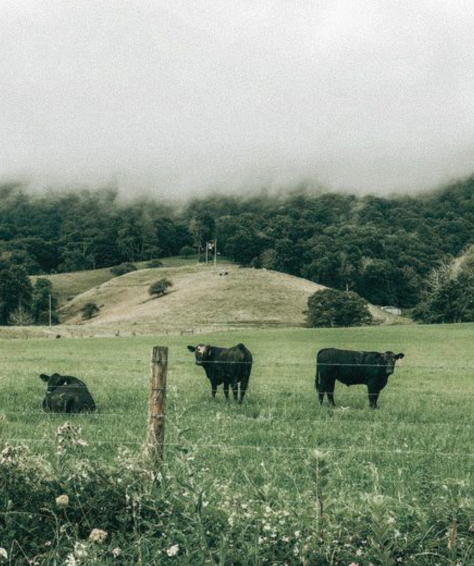The Ketogenic Diet is high in fats, moderate in protein and low in carbohydrates. Adopting this eating style trains your body to better utilise fat for fuel, which in tern can have an incredible impact on your health and performance.
Let’s look at a few examples:
-
Are you an athlete looking to increase performance through training your body to better utilise fat for fuel?
The average person can store around 1,600 - 2,000 calories (400 - 500g) of glycogen in their muscles and liver. Comparably even lean individuals can store around 40,000 calories (4,444g) of fat. Athletes who aren’t metabolically flexible (efficient at using both carbs and fat for fuel) often hit a wall during training or competition once they’ve burnt through their carbohydrate stores. However, if you use the Ketogenic Diet to become metabolically flexible you’ll make this way less likely to happen. This is because, once fat adapted, during periods of lower intensity your body will switch to using your fat stores, thus sparing your much smaller stores of carbohydrate for higher intensity periods when needed.
-
Do you want to lose some unwanted fat?
Keto can be a really effective tool for weight loss because it often leads to fewer cravings and a lower caloric intake. The reason for this is two fold;
1. When done intelligently the Ketogenic Diet is centred around real foods, which are much more satiating due to their nutrient density.
2. Once metabolically flexible, your body will better utilise fat for fuel at low intensities, for example when you’re walking or at rest. Because your fat stores are much greater as outlined above, you’ll notice that energy levels will be steady and subsequently the desire for that carb heavy snack to top up your energy stores will disappear.
-
Do you need less brain fog and more stable energy at work?
When in Ketosis people often experience more lucid thinking, a heightened state of awareness and sustained energy levels. This is because Ketones can cross the blood brain barrier quicker than other fat molecules due to their smaller size.
From personal experience, I used to crash post lunch in work and getting through the second half of the day was a coffee fuelled slog. Once I’d adopted the Ketogenic Diet and was fully fat adapted (after around four weeks), my energy levels felt like they built throughout the day, I was able to work longer hours and became much more productive.
So what do macronutrient (fat, protein and carb) requirements look like on a Ketogenic Diet?
For an individual looking to use Keto for weight loss or mental performance, I suggest following a Modified Ketogenic Diet. However for an athlete I suggest following a Targeted Ketogenic Diet (TKD).
The modified ketogenic diet consists of roughly 70% fat, 25% protein and 5% carbohydrates. A TKD adds an additional 25 - 50g of carbs on top of this on training days depending on the intensity of training and reduces fat proportionally. Remember a gram of fat is 9kcals, whereas a gram of carbohydrate (and protein) is 4kcals. Therefore if you increase your carbs by 50g (200kcals) you only need to reduce your fat intake by 22g to keep your calories the same.
As a side note, the Original / Classic Ketogenic Diet was designed for and is very effective at combating a variety of health issues such as cancer and epilepsy. It is low in both protein (6%) and carbs (4%) and therefore should only be used for medical reasons. This said, I’m not a doctor and medical issues aren’t my wheelhouse. However, if you are looking to use Keto for a medical condition I’d suggest using the resources section on Keto Nutrition’s website (https://www.ketonutrition.org/).
A typical day on a Modified Ketogenic Diet for me looks like this:
-
Protein = 160G (640kcal) - 22% of daily calories
-
Carbs = 50G (200kcal) - 7% of daily calories
-
Fat = 234G (2,105kcal) – 71% of daily calories
Whereas a heavy training day looks like this:
-
Protein = 160G (640kcal) - 22% of daily calories
-
Carbs = 100G (400kcal) - 14% of daily calories
-
Fat = 212G (1,908kcal) – 64% of daily calories
To work out what your specific macronutrient requirements are, I recommend using: https://keto-calculator.ankerl.com
*Note - I don’t suggest diving straight in and adopting a modified Ketogenic approach if you’ve previously been eating a high carb diet. Doing so can result in a period of not feeling great often referred to as ‘Keto Flu’. This is because your body isn’t good at using fat for fuel yet and you’re not providing it with the carbohydrates it’s used to using for energy. Therefore people often report brain fog and a lack of energy. To avoid this I’d highly recommend a slow transition period where you teach your body to use fat by slowly reducing your carbohydrate intake over a four week period. I go through how this can be achieved in detail in our previous article: Keto Transition Guide for Athletes.
So what does a typical day of eating look like?
- 10am - Breakfast - 3 eggs, 3 rashers of bacon and mushrooms cooked in beef tallow
- 12:30am - Pre-training snack - Keto collagen coffee & a spoonful of raw honey (https://www.apenutrition.co.uk/ape-nutrition-articles/2019/11/4/keto-bulletproof-coffee-recipe-plus-collagen-in-under-a-minute-with-video)
- 1pm - Heavy training session
- 2:30pm - Lunch (on arrival home from training) - 2 beef burgers, olives, sauerkraut and a banana for desert
- 6:00pm - Dinner - 250g chicken thighs (skin on) and white rice with a Keto Fuel bar for desert
As I stated previously, when done intelligently the Ketogenic Diet is centred around real food. (That’s why all our bars, unlike the vast majority of protein bars on the market are made of nutrient dense whole foods as opposed to lab created synthetic ingredients.) Subsequently I’d recommend your two main focuses being;
-
Ensuring you stick to your macronutrient requirements by using a tracking app like Chronometer.
-
Avoiding any synthetic foods, (empty calories that don’t contain any micro-nutrients) which don’t satiate the body.
*Note - I eat organic and grass-fed as much as possible due to the reasons outlined in my previous article Organic Food | Why It’s Better And Why We’re Being Lied To.
**The above is an example of what I eat on a heavy training day. On a non-training day I would take out the white rice and banana and replace them with some extra good fats like MCT Oil.
If you’re inspired to give Keto a go let me know in the comments below! Also if you have any questions or article suggestions please feel free to ask.






